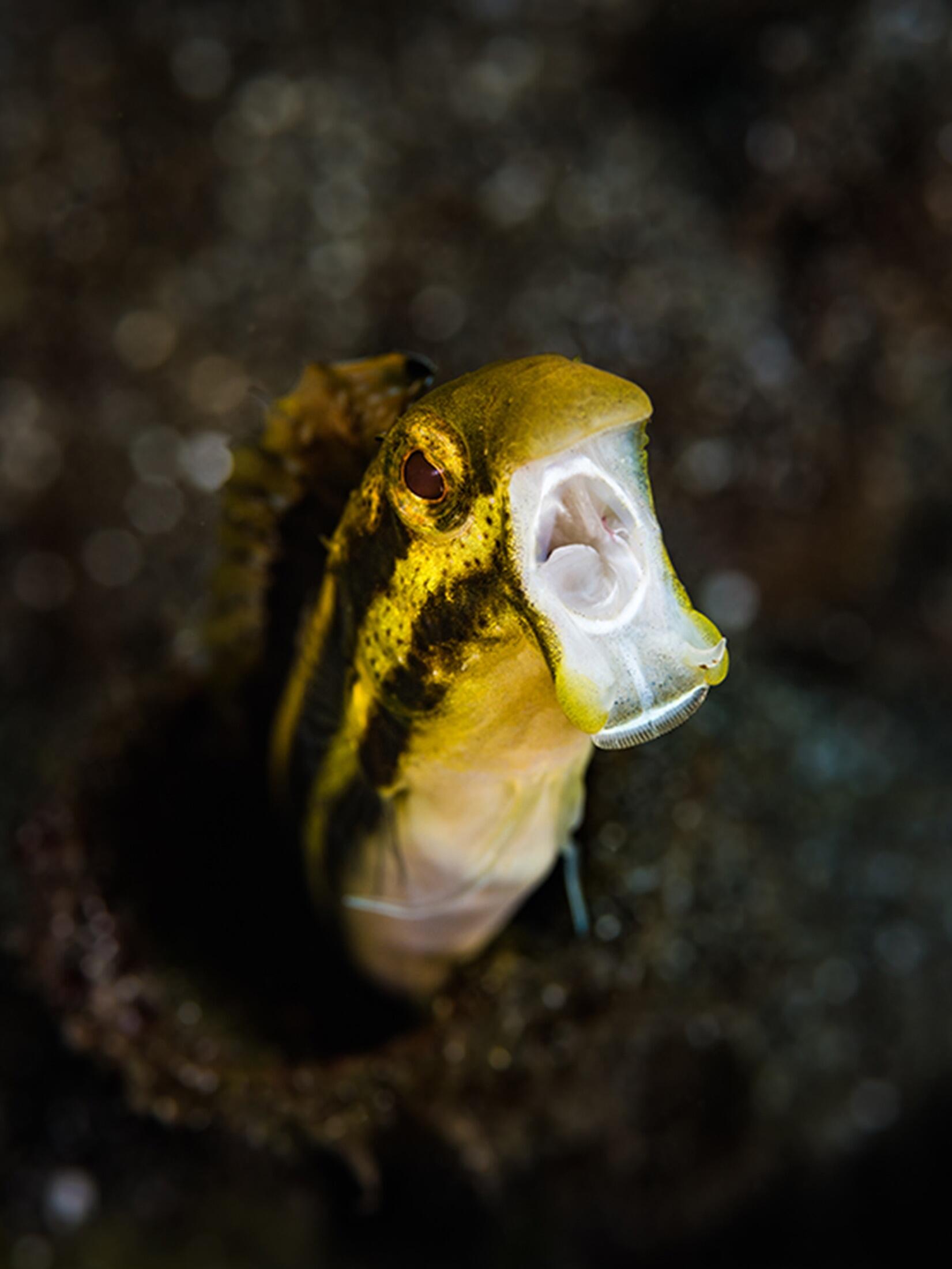
A study led by LSTM describes the advanced venom system of a seemingly unassuming little fish, and its major impact on fishes and other animals in its community.
As a member of LSTM’s Alistair Reid Venom Research Unit, Dr Casewell works with some of the most venomous snakes in the world, working to develop new and more effective treatments to combat the problem of snakebite in Africa and Asia. His interest in venom systems however is much broader, and with colleagues at the University of Queensland in Australia he has co-authored the paper, published in Current Biology, which examines to makeup and effects of a seemingly much less intimidating creature, the fang blenny.
“One of the real surprises that came from the study,” said Dr Casewell, “was the evidence suggesting that fangs of the fang blenny fish evolved before the venom. This is unusual, because in snakes for example, we’ve found that some sort of venom secretions evolved first, before the evolution of the elaborate venom delivery mechanism.”
Fang blennies are small fish with big teeth. Specifically, they have two large canine teeth that jut out of their lower jaw. Since blenny fish are only about two inches long, these “fangs” would be less than intimidating if not for the venom within. Researchers, who did a proteomic analysis of extracted venom, found three venom compounds: a neuropeptide that occurs in cone snail venom, a lipase similar to one from scorpions, and an opioid peptide, and the effect of these compounds on their would-be predators was the biggest surprise of all.
While fish with venomous dorsal spines can cause immediate and blinding pain, blenny fish venom when tested appears to be painless and most likely causes a sudden drop in blood pressure due to the neuropeptide and opioid components. This most likely leaves the attackers disoriented and unable to give chase. “By slowing down potential predators, the fang blennies have a chance to escape,” says the study’s co-author, Bryan Fry from the University of Queensland. “While the feeling of pain is not produced, opioids can produce sensations of extremely unpleasant nausea and dizziness in mammals.”
Nonvenomous fang blennies and other small fish capitalize on the venom’s success by mimicking venomous fang blennies’ colors and patterns. While predatory fish will not feed on them because they believe them to be venomous, this protection allows the mimics to get very close, feeding on the bigger fish by picking off their scales as micropredators. These interactions highlight the importance of this venom system at a community level.
Extracting the tiny fish’s venom for chemical tests was very different from the venom extractions that take place at LSTM. With the fish injecting such a small amount of venom when it bites, the team found it difficult to collect enough for proteomic analyses. The researchers ended up using a quirky but labor-intensive method for extracting blenny venom which saw the fish biting small cotton buds, from which the venom was then drawn.
“The advanced venom delivery system of these tiny fish give us a further insight into the impact of venom itself, its evolution and interactions within a wider community,” continued Dr Casewell, “feeding into our wider therapeutic venom research, and ultimately benefitting our drive to produce more effective and affordable antivenoms.”
More media links on this story